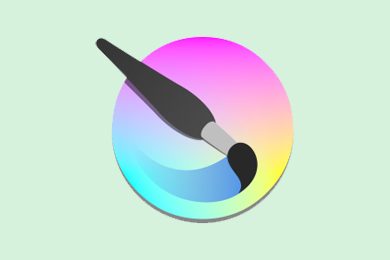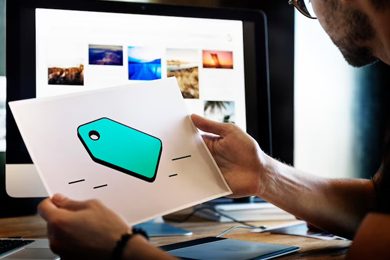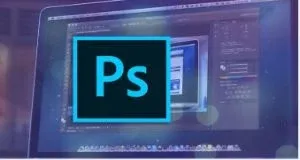This plan includes
- Limited free courses access
- Play & Pause Course Videos
- Video Recorded Lectures
- Learn on Mobile/PC/Tablet
- Quizzes and Real Projects
- Lifetime Course Certificate
- Email & Chat Support
What you'll learn?
- Important computer graphics concepts related to the process of creating digital artworks
- Basic features of Krita such as the UI, canvas navigation, and so on
- Basic drawing, inking, dan coloring techniques using a style commonly found in superhero comics
- Learn more sophisticated techniques to speed up the creation process such as using selection, layer composition, blending modes, and so on
- Learn shading concepts and techniques for digital painting
- Create an illustration using a non-destructive workflow
Course Overview
Krita is a graphic application comparable to Photoshop. But unlike Photoshop, Krita is free and open-source software. So, you don't need to pay anything to download and use it. Another thing that makes Krita different from Photoshop, is that Krita is more focused on digital painting. That is why in Krita, you can find many features related to digital painting that do not exist in Photoshop. If you need software for drawing or creating illustrations, then Krita will make you feel right at home.
If you have never used Krita before or even never used any graphic software such as Photoshop, Gimp, and so on. You don't need to worry. Because we will start from the very basics. I have carefully crafted the curriculum for convenience and speed. In sha Allah, you can master Krita quickly but through an easy and enjoyable learning experience.
What you will learn
There are a lot of things that you are going to learn in this course. Just for a quick preview, this online course consists of 8 chapters, outside the introduction chapter.
In chapter zero or the introduction chapter, you will learn how to set up the drawing tablet. And also various tips to make Krita perform optimally.
Then in the first chapter, you will learn the theories and concepts around computer graphics which will be relevant later in the digital painting process. You will learn the difference between raster and vector graphics. Then learn various types of color models that exist in the world, such as RGB and HSV. Then learn the basic concepts behind bits per channel, high range images, hexadecimal color codes, and so on.
In the second chapter, you will start learning the basic features of Krita. From how to work with documents. Understanding the UI and how to tweak it. Then learn the different methods of canvas navigation.
In the next chapter, you will learn how to use the freehand brush tool and also how to work with color in Krita. From choosing and managing brush presets. How to use the pop-up palette. Understanding various parameters related to brush, such as size, opacity, flow, eraser mode, etc. Then learn how to use the advanced color selector, color sampling technique, how to use the color palette, and so on.
In the fourth chapter, we are going to discuss various tools that are based on the brush engine. We will learn tools like the line tool, rectangle tool, Ellipse tool, polygon tool, polyline tool, and so on.
In the fifth chapter, you will learn about the selection and layer composition. We will start by discussing the basic selection techniques. Then move on to custom-shaped selection techniques. Then discuss the background layer. Learn the different types of layers available in Krita. Understand various properties related to layers. Learn to make complex compositions using group layer, alpha inheritance, blending mode, etc. In this chapter, we will draw a simple landscape illustration using various tools and features we discussed earlier.
In chapter six, you will learn the basic techniques of drawing and coloring in Krita. To practice the techniques, you will create an ax weapon illustration from start to finish. You will start by drawing the sketch. Then learn various techniques for drawing smooth line arts. Then learn the various types of assistant tools available in Krita. You will also learn different approaches of adding base colors to a drawing. One of the techniques is to use the colorize mask feature. After that, you will learn how to add shading and highlight colors with a style you often see in superhero comics.
In the seventh chapter, you will learn the basics of creating digital paintings with smoother shading colors. You will start by preparing all the brush presets. Then learn to create custom shortcuts for faster workflow. Then we will discuss the basic concepts of shading. Learn how to form any shape we want by manipulating the color gradation on the canvas. Then we move on to learn different shading techniques. After that, we will put into practice the techniques that we learned by making a skull illustration. From drawing the sketch, adding the base color, applying shading and highlight colors, and finally adding details and textures to the drawing.
In the last chapter, we are going to discuss the workflow for creating a non-destructive illustration. We are going to create a tree on the cliff illustration from start to finish using all the techniques we learned before. The benefit of having a non-destructive composition is that it will be easier if we need to make some changes or revisions. In some cases, this kind of workflow becomes very crucial. Such as when you need to create a lot of variations from a single artwork as quickly as possible.
So, join the course now! And start creating beautiful artworks using Krita.
Pre-requisites
- Designed for complete beginners. No previous experience needed!
- Able to use basic computer operations such as copying file, extracting zip file, installing software, etc.
- Have a pressure-sensitive drawing tablet such as: Wacom, XP-Pen, Huion, etc.
Target Audience
- Anyone who wants to learn digital illustration from scratch
- Anyone who wants to learn Krita from the very basic
- Photoshop or Corel-Painter users who want to migrate to an open-source alternative.
Curriculum 62 Lectures 06:56:31
Section 1 : Introduction
- Lecture 2 :
- Project files and other information
- Lecture 3 :
- Drawing tablet setup
- Lecture 4 :
- Krita performance tips
Section 2 : Basic computer graphics concepts
- Lecture 1 :
- Raster versus Vector
- Lecture 2 :
- RGB and HSV color models
- Lecture 3 :
- Other color models
- Lecture 4 :
- Bit per channel
- Lecture 5 :
- High-range images
- Lecture 6 :
- Hexadecimal color code
Section 3 : Basic features
- Lecture 1 :
- Creating new documents
- Lecture 2 :
- Clipboard and file formats
- Lecture 3 :
- UI basics
- Lecture 4 :
- Advanced UI settings
- Lecture 5 :
- Main navigation methods
- Lecture 6 :
- Alternative navigation methods
Section 4 : Brush and Color
- Lecture 1 :
- Managing brushes
- Lecture 2 :
- Size, Opacity, and Eraser
- Lecture 3 :
- Flow and dirty preset
- Lecture 4 :
- Color selecting basics
- Lecture 5 :
- Offsetting and sampling color
- Lecture 6 :
- Color Palette
- Lecture 7 :
- Resource folder
Section 5 : Other brush-based tools
- Lecture 1 :
- Line tool
- Lecture 2 :
- Rectangle and Ellipse
- Lecture 3 :
- Polygon and Polyline
- Lecture 4 :
- Mirror and Multibrush
Section 6 : Selection and basic composition
- Lecture 1 :
- Selection basics
- Lecture 2 :
- Custom-shaped selection
- Lecture 3 :
- Introduction to Layers
- Lecture 4 :
- Background layer and Canvas color
- Lecture 5 :
- Basic layer properties
- Lecture 6 :
- Group layer
- Lecture 7 :
- Inherit alpha
- Lecture 8 :
- Image composition practice
- Lecture 9 :
- Move tool
- Lecture 10 :
- Opacity and Blending Modes
Section 7 : Drawing and Coloring
- Lecture 1 :
- Drawing a sketch
- Lecture 2 :
- Brush smoothing
- Lecture 3 :
- Assistant tool basics
- Lecture 4 :
- Advanced assistant tool
- Lecture 5 :
- Drawing the outline
- Lecture 6 :
- Basic coloring techniques
- Lecture 7 :
- Coloring with selection
- Lecture 8 :
- Colorize mask
- Lecture 9 :
- Shading
- Lecture 10 :
- Highlighting
Section 8 : Basic digital painting
- Lecture 1 :
- Brush presets preparation
- Lecture 2 :
- Custom shortcuts
- Lecture 3 :
- Shading basic concepts
- Lecture 4 :
- Shading techniques
- Lecture 5 :
- Sketching, base color, and layer composition
- Lecture 6 :
- Shading with selection
- Lecture 7 :
- Highlights and textures
Section 9 : Non-destructive illustration
- Lecture 1 :
- The workflow
- Lecture 2 :
- Using reference Images
- Lecture 3 :
- Sketching
- Lecture 4 :
- Layer composition and base colors
- Lecture 5 :
- Local shading
- Lecture 6 :
- Global shading
- Lecture 7 :
- Details and textures
- Lecture 8 :
- Workflow flexibility
Our learners work at
Frequently Asked Questions
How do i access the course after purchase?
It's simple. When you sign up, you'll immediately have unlimited viewing of thousands of expert courses, paths to guide your learning, tools to measure your skills and hands-on resources like exercise files. There’s no limit on what you can learn and you can cancel at any time.Are these video based online self-learning courses?
Yes. All of the courses comes with online video based lectures created by certified instructors. Instructors have crafted these courses with a blend of high quality interactive videos, lectures, quizzes & real world projects to give you an indepth knowledge about the topic.Can i play & pause the course as per my convenience?
Yes absolutely & thats one of the advantage of self-paced courses. You can anytime pause or resume the course & come back & forth from one lecture to another lecture, play the videos mulitple times & so on.How do i contact the instructor for any doubts or questions?
Most of these courses have general questions & answers already covered within the course lectures. However, if you need any further help from the instructor, you can use the inbuilt Chat with Instructor option to send a message to an instructor & they will reply you within 24 hours. You can ask as many questions as you want.Do i need a pc to access the course or can i do it on mobile & tablet as well?
Brilliant question? Isn't it? You can access the courses on any device like PC, Mobile, Tablet & even on a smart tv. For mobile & a tablet you can download the Learnfly android or an iOS app. If mobile app is not available in your country, you can access the course directly by visting our website, its fully mobile friendly.Do i get any certificate for the courses?
Yes. Once you complete any course on our platform along with provided assessments by the instructor, you will be eligble to get certificate of course completion.
For how long can i access my course on the platform?
You require an active subscription to access courses on our platform. If your subscription is active, you can access any course on our platform with no restrictions.Is there any free trial?
Currently, we do not offer any free trial.Can i cancel anytime?
Yes, you can cancel your subscription at any time. Your subscription will auto-renew until you cancel, but why would you want to?
Instructor

8681 Course Views
7 Courses



 Tech & IT
Tech & IT
 Business
Business
 Coding & Developer
Coding & Developer
 Finance & Accounting
Finance & Accounting
 Academics
Academics
 Office Applications
Office Applications
 Art & Design
Art & Design
 Marketing
Marketing
 Health & Wellness
Health & Wellness
 Sounds & Music
Sounds & Music
 Lifestyle
Lifestyle
 Photography
Photography























